
Japan’s winter wonderland offers a variety of activities that will appeal to everybody who appreciates the beauty of snow and ice, and everything that goes with it. For adventurous visitors, Japan has some of the world’s best ski resorts renowned for their powdery snow. Cross-country skiing and hiking are popular in the forests. If you are into photography, you will find ample opportunities, in particular the tancho cranes and whooper swans. When it is time to relax, soak in a hot spring with a glass of hot sake wine!
Table of Contents
1) Zao Dai Rotenburo Hot Springs
Soaking in a Japanese hot spring is the reason why many people visit during winter. There is nothing more invigorating than sinking into the hot mineral waters, in particular when it is an outdoor natural bath, and even more special if snow is falling. Sip on a glass of hot sake and you will be in heaven!
One of the best experiences can be found at Zao Onsen on the slopes of the volcanic Mount Zao, located 400 km (248 mi) north of Tokyo. Zao Dai Rotenburo outdoor baths are located right in the hot and highly sulphuric mountain streams, surrounded by lush forests. This area gets a lot of snow which creates a stunning winter wonder world.

2) Zao Snow Monsters
Mount Zao in northern Honshu Island is famous for its “snow monsters” that come alive in mid-winter. Zao is one of only a few places in Japan where the juhyo (ice trees) can be seen. It is as if almost every tree, hardly recognisable as a tree by mid-winter, takes on the shape of a human, complete with facial features, blowing hair, hats, wide dresses, and limbs.
The “snow monsters” live around the peak of Zao Ski Resort and are usually at their most spectacular about mid-February.
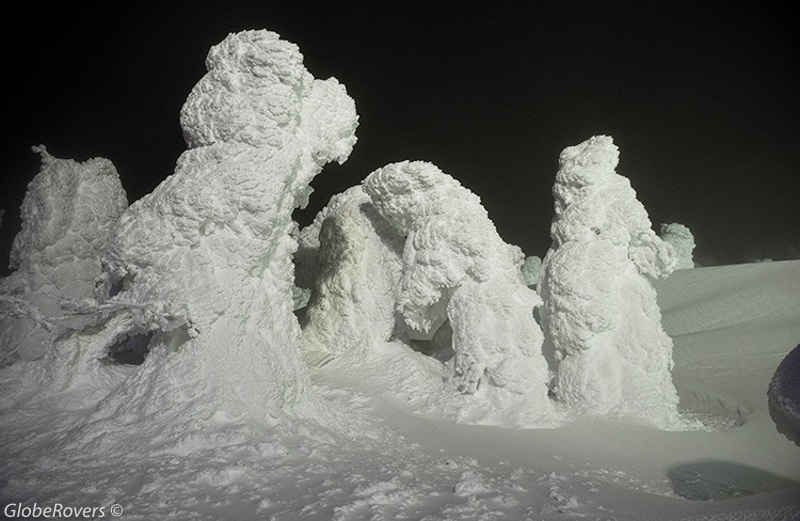
3) Hokkaido Snow Festival
Hokkaido Island offers some of the best snow and ice festivals in Japan. At the Tomamu Ski Resort you will find a beautifully created ice village that is illuminated at night with colourful lights.
However, the first prize must go to the annual Sapporo Yuki Matsuri (snow festival) in the Hokkaido capital. The massive snow and ice sculptures are meticulously created by teams of artists and then illuminated with thousands of small light bulbs. The 2020 festival will be held from the 4th to 11th of February.
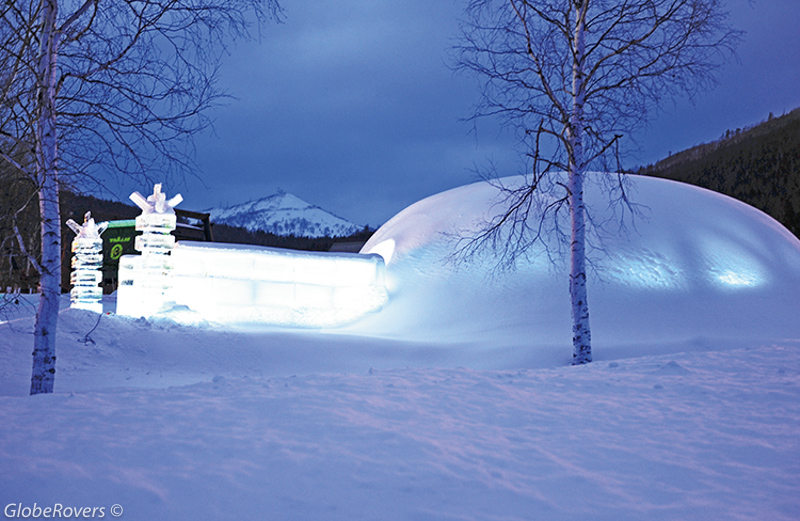
4) Tancho Cranes
Whether you are a photographer or a bird lover — or neither — you will appreciate the beauty of these majestic feathered friends prancing on the snow.
Japan’s rare, iconic, and enchanting red-crowned cranes, locally known as the tancho have been intertwined with Japanese culture throughout the ages. Depicted in Japanese poetry, paintings, and other forms of art, the tancho is highly revered. Congregating on the snow-covered marshes of Hokkaido’s Kushiro area, they are a must-visit during their winter courtship.
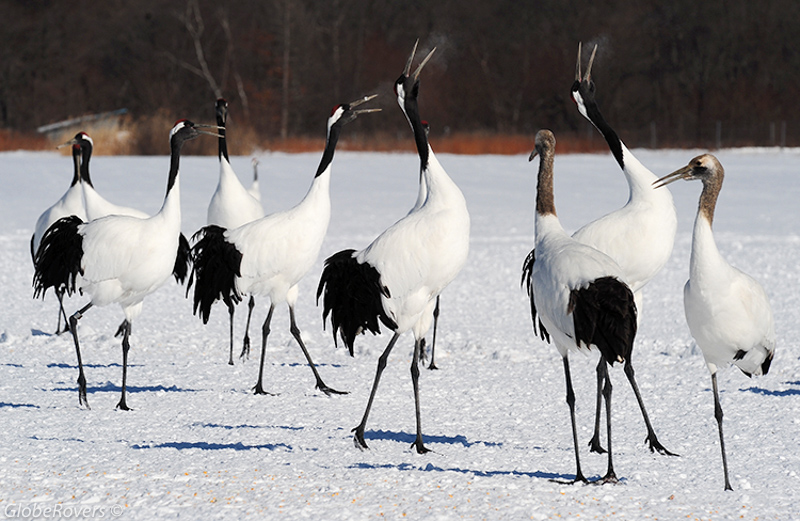
5) Whooper Swans
In eastern Hokkaido Island, along the shores of Lake Kussharo, a few hot springs flow into the partly frozen lake. In winter, whooper swans escape the harsh winters of Siberia to spend time in these hot spots along the lake.
The whooper swans are one of the heaviest flying birds in the world.
It is quite a sight to see so many of these white swans on the lake, with the snowy mountains of the Akan National Park in the background.
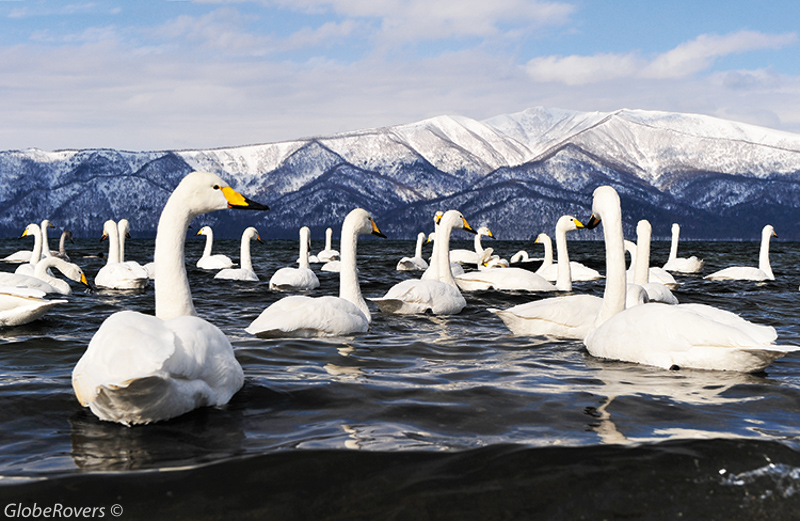
6) Iozan Mountain
Mount Iozan in eastern Hokkaido, is an active volcano sitting inside the giant Kussharo caldera. It is the source of the hot springs in the area, such as the beautiful Kawayu Onsen.
Mount Iozan’s name literally means “sulphur mountain”, so here you will see ample amounts of bright yellow sulphur deposits at the mouths of the hissing steam vents. It looks like the mountain is on fire with the many steam vents spewing steam, and sometimes water, high into the air. It is particularly scenic after heavy snowfalls.
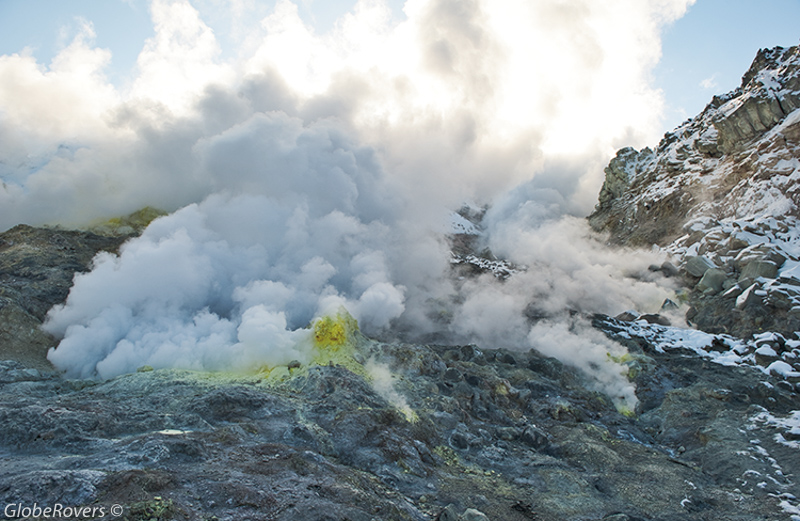
7) Tomamu Ski Resort
Located in central Hokkaido, about 90 minutes by train south of Sapporo, Tomamu is a popular winter resort for many reasons. It covers two mountains and has a large selection of trails.
It offers a host of other activities such as snowmobiling, snow rafting, backcountry tours, cross country skiing, paraskiing, snowshoeing and dog sledding. In winter the illuminated Ice Village offers a restaurant, wedding chapel, and a bar, all sculpted from snow and ice. Even the drinking glasses are carved from ice.
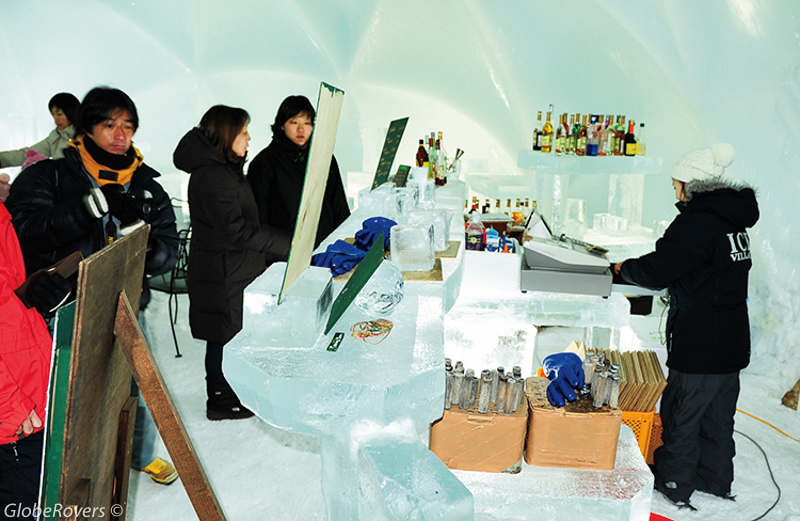
8) Abashiri Drift Ice
The Sea of Okhotsk coast of Hokkaido is the northern hemisphere’s southernmost region where drifting sea ice can be seen. At the far northeastern coast of the island, the sea ice typically reaches the coast around Abashiri in mid to late January and disappears again by late March to mid-April.
Arrive during the second half of February, board one of the sightseeing boats, and head into the ice-covered sea. Over the last few years, the boats have had to travel further north to find the ice which has been on the decline due to global warming.

9) Nyoto Hot Springs Village
Located to the northeast of Lake Tazawa in the north of Honshu Island, the Nyuto-onsen-kyo Hot Springs Village is the collective name for seven hot spring inns located inside the Towada-Hachimantai National Park.
Surrounded by primeval beech forest, this pristine part of Japan is beautiful all-year-round, in particular in autumn and winter. The sulphuric springs here are of exceptional quality and the snow falls can be heavy, which makes relaxing in the outdoors baths a memorable experience.
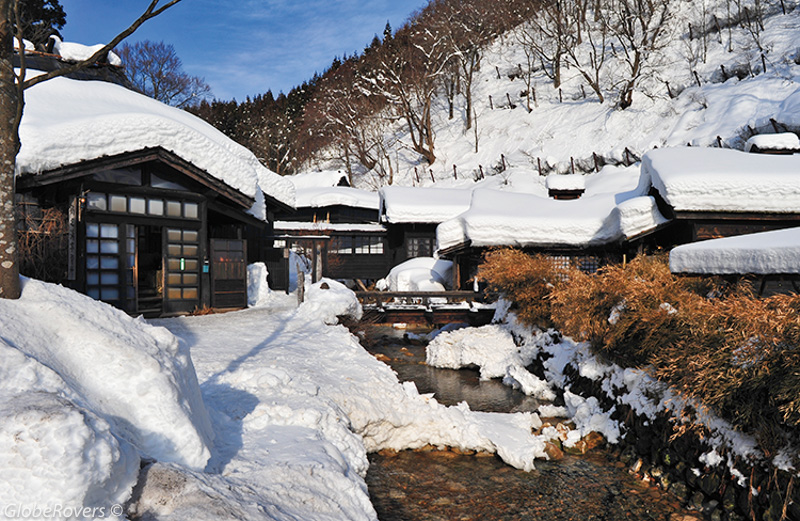
10) Gozanoishi Shrine
Visiting a Japanese shrine or temple covered in snow is one of the most beautiful scenes Japan can offer. When the shrine stands on the shores of a caldera lake, surrounded by snow-covered mountains, it is even more stunning.
On the northern shores of Lake Tazawa in the north of Honshu Island, stands the Gozanoishi-jinja Shrine that dates back to 1650. It features a beautiful red torii (spiritual gate) looking out over the lake’s blue waves. In winter this torii is covered in snow and is a sight to behold.
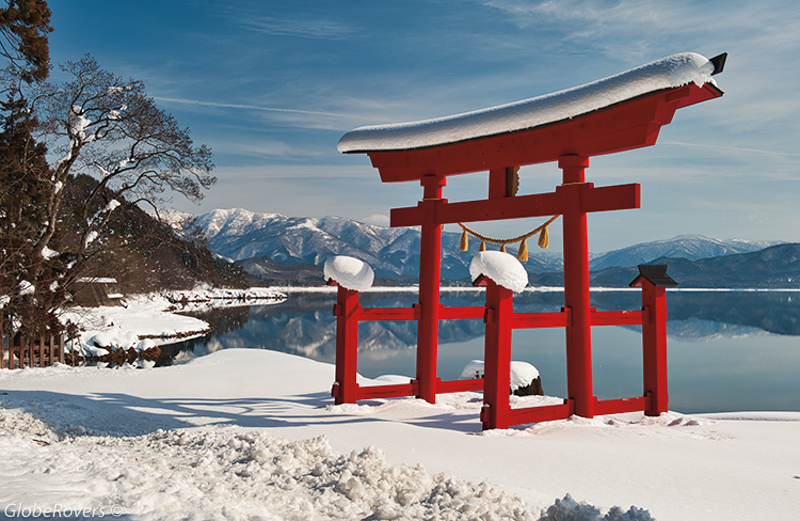
Links to all posts of Japan in winter
COMING SOON

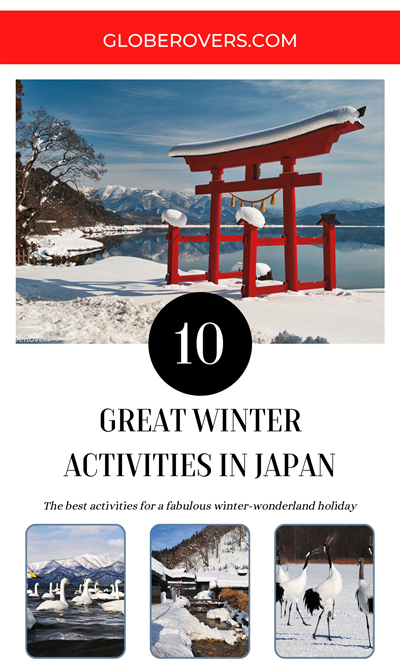
Further reading:
- Everything you need to know about Japan’s Tōhoku Matsuri Festivals
- 10 Places to Visit in Hokkaido
- Okinawa – Japan’s Paradise Islands

Blog post and photos by Peter who has been travelling almost full-time since 2005 and has been to over 122 countries. He visited several countries, such as Japan, more than 20 times. Peter is Editor-in-Chief and Publisher of GlobeRovers Magazine, an independent travel magazine focused on intrepid destinations.
